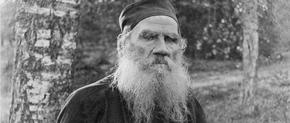The views expressed in our content reflect individual perspectives and do not represent the authoritative views of the Baha'i Faith.
Tahirih, with her learning, her poetry and her devotion to the Babi Faith—the precursor of the Baha’i Faith—had a tremendous influence in life as well as in death.
The story of her conversion from Islam to the Babi Faith inspired many:
One night when it was getting along toward dawn [Tahirih] laid her head on her pillow, lost all awareness of this earthly life, and dreamed a dream; in her vision a youth, a Siyyid [a descendent of Muhammad], wearing a black cloak and a green turban, appeared to her in the heavens; he was standing in the air, reciting verses and praying with his hands upraised. At once, she memorized one of those verses, and wrote it down in her notebook when she awoke. After the Báb had declared His mission, and His first book, “The Best of Stories,” [The Ahsanu’l-Qisas, the Bab’s commentary on the Surih of Joseph] was circulated, Tahirih was reading a section of the text one day, and she came upon that same verse, which she had noted down from the dream. Instantly offering thanks, she fell to her knees and bowed her forehead to the ground, convinced that the Bab’s message was truth. – Abdu’l-Baha, Memorials of the Faithful, p. 193.
This kind of mystical insight may have led to one of the more unusual Western literary mentions of Tahirih, made during a series of lectures by William Rossetti, brother of the famous 19th century English poet, Christina Rossetti, and published in The Dublin University Magazine in March, 1878. Rossetti was lecturing on the poem The Revolt of Islam by Percy Bysshe Shelley. The poem has no actual basis in Islam nor does it seek to depict it, but its male character is a spiritual reformer seeking to reestablish virtue, aided by an influential female companion. Rossetti wrote of the connection between the poem and the story of the Bab:
… the very singular and striking resemblance which the invented story of the “Revolt of Islam,” written in 1817, bears to some historical events of much more recent date in Persia. I refer to the career of the sect named the Babys [Babis], founded by a young man, a native of Shiraz—Mirza-Ali-Muhamad, who in 1843, was a student in a theological school. – William Michael Rossetti, “Shelley’s Life and Writings, Two Lectures,” The University, A Literary and Philosophic Review, Volume 1, p. 264.
Rossetti said that Tahirih had an “almost magical influence over large masses of the population.” To Rossetti, Shelley’s characters seem to prefigure both the lives of the Bab and Tahirih and the great changes of the 19th century following the French Revolution.
Then in 1885, a convert to the Unitarian ministry, John Tunis, made extraordinary use of Tahirih as a symbol in his article, “Woman in the Ministry: An Appeal to Fact,” in Unity, May 9, 1885. He wanted to advance the view that women should be permitted to preach in churches, and based his argument on reason and fact. His model for his argument was Tahirih:
It is needful to repeat again and again, that the right and fitness of a woman to preach, depends solely on an appeal to fact. Moreover, the fact must be a fact from our own century…a woman who must remain the crown of her sex in the present age. It is on this woman…renamed with the beautiful name of “Consolation of the Eyes” that I propose to base an appeal to fact in the question, ought women to preach?” – John Tunis, “Woman in the Ministry: An Appeal to Fact” Unity, Volume XV, No 6, p. 92.
Tunis praised the power of Tahirih’s faith:
A passive sympathy was too little for her ardent spirit … She threw off the veil, she denounced polygamy and … began openly to preach and make converts …The uncle, the father, the husband, ransacked their erudite brains for arguments to reduce her to the old state of subordination. In vain, she answered by the unanswerable argument of faith wearied of the old commonplace. In the end, she left her home and consecrated herself to the Apostolic mission which the new religion conferred on her. – Ibid., p. 93.
Tunis told how Tahirih had courageously called for emancipation of women from age old customs:
She began of telling of her great truth, that the time had come for the new religion of the Bab to cover all the surface of the earth, and that in obedience to this new faith God must be worshipped henceforth in the spirit and in truth …Therefore it was high time that woman should rouse herself, should share the toil of her father, her husband, should brave equally with them the dangers. It was no longer time for them to be shut up in the inner women’s courts, waiting in listless indolence while men wrought for them … let them be companions of the men, follow them, die with them, even on the field of battle. – Ibid.
He concluded by holding Tahirih up as a model and a challenge for Western peoples:
Such is my appeal to fact. The question of the propriety of women in the ministry is a pressing one … the real value of our consideration of this Eastern woman is that we remain in the neighborhood of the question. – Ibid.
Jane Dieulafoy, a French archaeologist who considered herself an absolute equal to men, also wrote about Tahirih. She was best known for her excavations of Susa, a settlement in southeastern Iran dating back millennia, with her husband. Dieulafoy’s 1887 book, La Perse, La Chaldee et La Susiane, included a short mention of Tahirih.
This series of essays is excerpted from Hussein Ahdieh’s and Hillary Chapman’s The Calling, available here:https://www.bahaibookstore.com/The-Calling-P8882.aspx

















Comments
Sign in or create an account
Continue with Facebookor